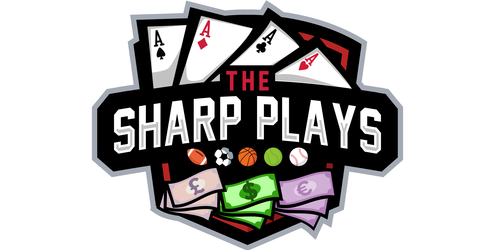
Last night ahead of Game 3: Toronto vs. Golden State, I posted on Twitter that sharp money was coming in on Toronto, while the public was on Golden State.
Pretty quickly, I received a flurry of replies and DMs. People were sending in ticket and money percentage data from various sportsbooks and line service sites. In their view, the highest ticket percentage was on Toronto—so naturally, they concluded Toronto = public side and therefore GSW must be the sharp play. ❌
That logic couldn’t have been more wrong.
🧠 The Misunderstood Percentages
Ticket and money percentages show what proportion of bets (tickets) and what proportion of the money wagered is on each side. They’re often posted by sportsbooks or aggregators and used by bettors to “read the market.”
But here’s the truth:
That data is only the first chapter—not the whole story.
People love to see a high ticket % on one team and a high money % on the other. They then assume:
- 💰 High ticket % = public
- 🧠 High money % = sharp
Sometimes that’s accurate. Often, it’s dangerously misleading.
🔍 A Real-World Example
Here’s the data from a line service provider for Game 3:
Tickets
- Toronto: 61%
- GSW: 39%
Money
- Toronto: 64%
- GSW: 36%
Based on that alone, you might believe Toronto was the public darling—and you’d be investing based on bad data.
Now, compare that with data from a sportsbook I work with, which breaks action down by bettor type (sharp or recreational):
📊 The True Breakdown: Sharp vs. Public
Tickets
- Toronto: 59%
- Of the 59% of the total tickets on Toronto, here’s how those Toronto tickets were split…
- 📈 Sharp: 78%
- 🎯 Public: 22%
- Of the 59% of the total tickets on Toronto, here’s how those Toronto tickets were split…
- GSW: 41%
- Of the 41% of the total tickets on Golden St, here’s how those tickets were split…
- 📈 Sharp: 29%
- 🎯 Public: 71%
- Of the 41% of the total tickets on Golden St, here’s how those tickets were split…
Money
- Toronto: 63%
- 📈 Sharp: 89%
- 🎯 Public: 11%
- GSW: 37%
- 📈 Sharp: 18%
- 🎯 Public: 82%
🔎 Now you see it: Toronto was loaded with sharp money.
Just because they had a majority of the tickets does not mean they were the public side. In fact, the public was overwhelmingly on GSW.
🚨 The Big Lesson
Blindly trusting ticket and money percentages from public sites or line services?
Not even top 5 material for making strong betting decisions. 🎲
Unless you know:
- Who’s placing those bets (sharp vs. recreational)
- How many repeat bets are being counted
- What the ROI and sample size of those bettors look like
…then you’re guessing. Some guesses will land. Some will get crushed.
📌 Final Thought
Yes, ticket/money percentages have some value. But like any market, context is king. If you can’t see under the hood of the data, you’re just rolling the dice blind.
🎙️ Good luck in your action!
~ The Sharp Plays
